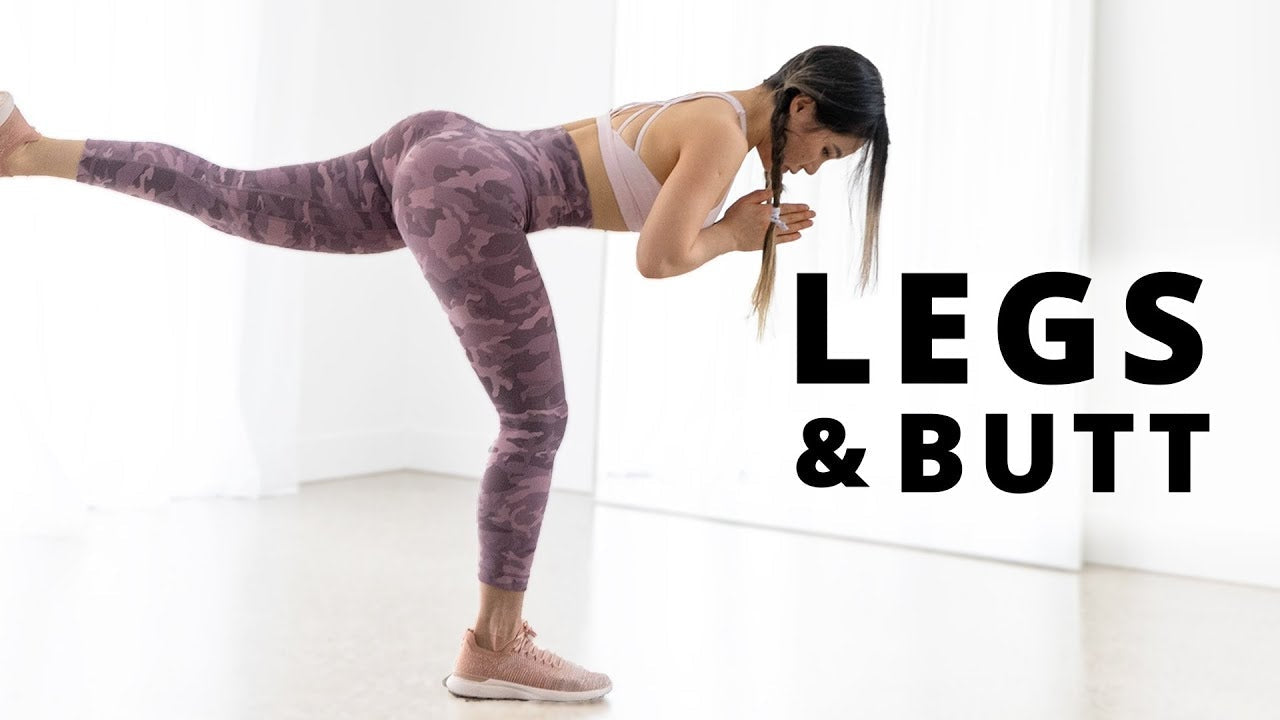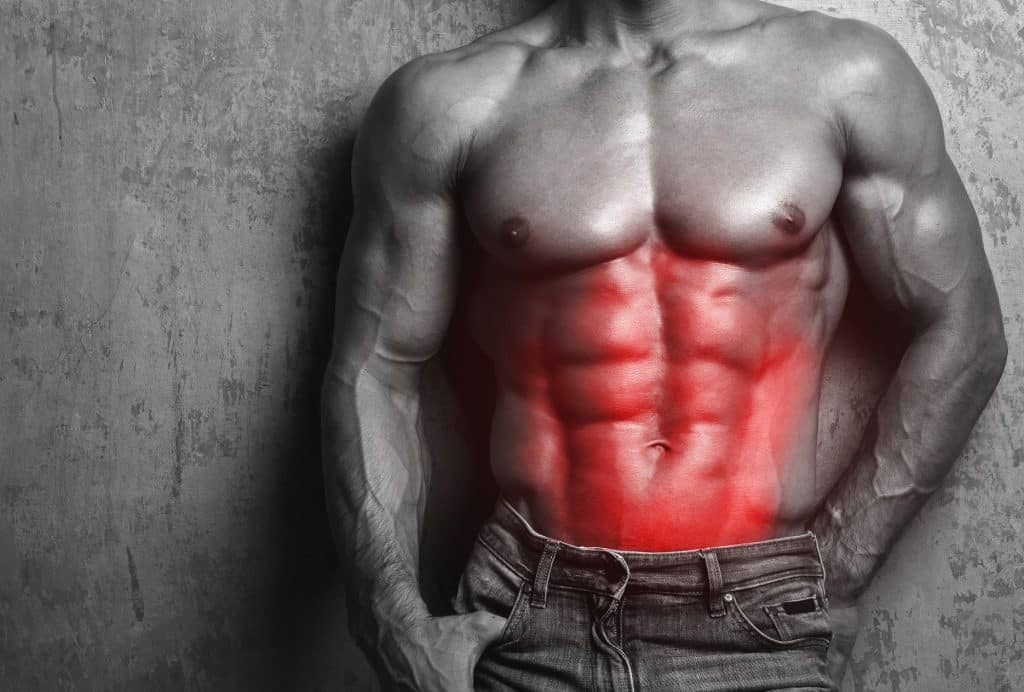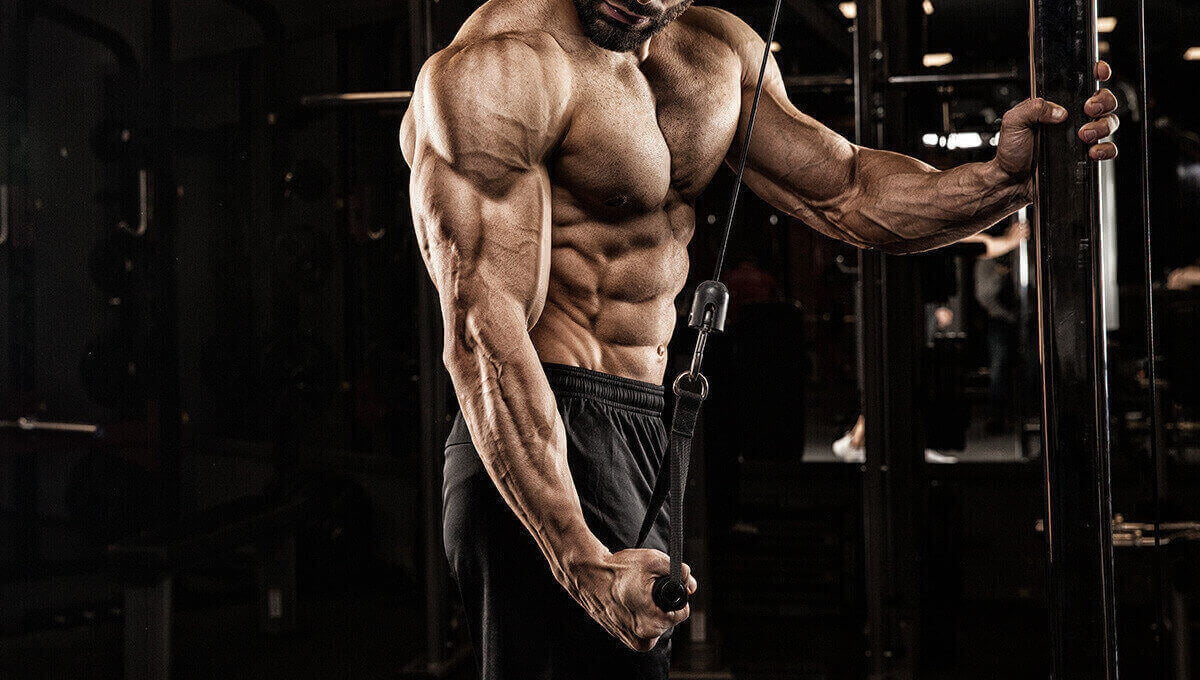Are you ready to embark on a journey to transform your legs and buttocks into their most beautiful and powerful form? Leg and butt workouts for women are more than just about aesthetics; they're about building strength, improving your overall fitness, and boosting your confidence. In this comprehensive guide, we'll explore the ins and outs of leg and butt workouts, from understanding their importance to creating a workout plan that suits your goals and lifestyle.
Understanding the Importance of Leg and Butt Workouts
Strong and toned leg and butt muscles offer a plethora of benefits. First and foremost, they contribute to a more aesthetically pleasing physique. The glutes, in particular, are often considered one of the body's most attractive features. But it's not just about looks; these muscles play a crucial role in everyday functions. They support your posture, help you maintain balance, and enable you to perform a wide range of movements efficiently. Whether it's running, lifting, or simply walking up a flight of stairs, your leg and butt muscles are at the core of it all.
Common Misconceptions
Before delving into workouts and exercises, let's dispel some common myths. One prevailing misconception is that leg and butt workouts will make women look bulky. The truth is that building significant muscle mass, known as hypertrophy, takes a dedicated effort involving heavy weights, high-calorie diets, and targeted training. For most women, leg and butt workouts lead to toning and firming rather than excessive muscle gain.
Types of Leg and Butt Workouts
Building strength and sculpting the perfect lower body involves a diverse range of exercises. In this section, we explore the key categories of leg and butt workouts, from strength training and cardio exercises to bodyweight routines and flexibility exercises. Whether you're a beginner or an experienced fitness enthusiast, understanding these workout types will help you tailor your regimen for optimal results
Strength Training
SquatsSquats are the cornerstone of leg and butt workouts. They engage your quadriceps, hamstrings, and glutes, making them a must-do exercise for a comprehensive lower body workout. |
|
How to do Squats: |
|
|
|
|
|
|
Benefits: |
|
Strengthens the quadriceps, hamstrings, glutes, and lower back. |
|
Improves balance and flexibility. |
|
Enhances core stability. |
|
Variations: |
|
Goblet Squats: Hold a dumbbell or kettlebell close to your chest. |
|
Sumo Squats: Wider stance, toes pointed outward. |
|
Bulgarian Split Squats: Elevate one foot behind you. |
|
Pistol Squats: Squat on one leg while extending the other in front of you. |
Lunges
Lunges target your quadriceps and glutes while also enhancing balance and stability.
|
How to do Lunges: |
|
|
|
|
|
Benefits: |
|
|
|
|
Variations: |
|
|
|
|
Deadlifts
Deadlifts not only work your leg and butt muscles but also strengthen your lower back, making them a great compound exercise.
|
How to do Deadlifts: |
|
|
|
|
|
Benefits: |
|
|
|
|
Variations: |
|
|
|
Cardio Exercises
Running
Running is an excellent way to engage your leg muscles, including your calves and quads. It also helps burn calories and reduce body fat.
Cycling
Cycling is a low-impact option that can help you build leg strength and endurance without putting excessive stress on your joints.
Stair Climbing
Climbing stairs is an effective way to target the glutes, quads, and calves while improving cardiovascular fitness.
Bodyweight Exercises
Glute Bridges
This bodyweight exercise targets the glutes and is excellent for building strength and enhancing the shape of your buttocks.
|
How to do Glute Bridges: |
|
|
|
|
Benefits: |
|
|
|
Variations: |
|
|
Step-Ups
Step-ups work your quads, hamstrings, and glutes while improving balance and coordination.
|
How to do Step-Ups: |
|
|
|
|
Benefits: |
|
|
|
|
Variations: |
|
|
|
Leg Lifts
Leg lifts are a simple yet effective exercise to engage your leg muscles, especially your quadriceps.
|
How to do Leg Lifts: |
|
|
|
|
Benefits: |
|
|
|
|
Variations: |
|
|
Flexibility and Mobility Exercises for Legs and Butts
Yoga
Yoga not only enhances flexibility and mobility but also promotes strength and balance, benefiting your leg and butt muscles.
Stretching Routines
Incorporating stretching routines into your workout plan can help prevent injury and improve your range of motion.
The Role of Resistance Bands and Weights
Including resistance bands and weights in your workouts can provide extra resistance, which is crucial for progressive overload, a key factor in muscle growth. Whether you're performing squats, lunges, or other exercises, resistance bands and weights can make your workouts more challenging and rewarding.
Creating a Leg and Butt Workout Plan
Before jumping into any workout plan, it's essential to assess your current fitness level and define your goals. Are you looking to build muscle, lose fat, or both? Knowing where you stand and where you want to go will help you tailor your workout plan accordingly.
Balancing Exercises for a Well-Rounded Routine
A well-rounded leg and butt workout should include exercises that target various muscle groups. For example, squats and lunges primarily target the quads, while deadlifts work the hamstrings and lower back. Ensure your routine includes exercises that address all major muscle groups in your legs and buttocks.
Determining Sets and Reps
The number of sets and repetitions in your workout plan depends on your goals. For muscle building, aim for 3-4 sets of 8-12 repetitions per exercise. If you're more interested in endurance and toning, higher reps (15-20) and fewer sets can be effective. Adjust your sets and reps accordingly to meet your objectives.
The Importance of Progressive Overload
Progressive overload is the concept of gradually increasing the weight, resistance, or intensity of your workouts. This principle is fundamental to muscle growth. As you become stronger, it's crucial to challenge your muscles with increased resistance to continue seeing progress.
Nutritional Support for Leg and Butt Workouts
Your diet plays a significant role in the success of your leg and butt workouts. To maximize muscle growth and recovery, consider the following nutritional guidelines:
Proper Nutrition for Muscle Growth and Recovery
To build and repair muscle tissue, your body requires an adequate intake of protein. Consuming protein-rich foods like lean meats, fish, eggs, and plant-based sources is essential for muscle recovery and growth. In addition to protein, make sure you're getting sufficient carbohydrates for energy and fats for overall health.
Suggested Macronutrient Ratios
Balancing your macronutrients is critical. A general guideline for active individuals is to consume about 40% carbohydrates, 30% protein, and 30% healthy fats. However, these ratios may vary depending on your individual needs and goals.
Hydration and Its Impact
Proper hydration is often underestimated. Staying well-hydrated supports muscle function, joint health, and overall physical performance. Aim to drink at least 8-10 glasses of water per day, and more if you're engaged in intense physical activity.
Protein-Rich Foods for Muscle Development
Protein is the building block of muscle, and including it in your diet is essential. Opt for lean proteins like chicken, turkey, fish, and plant-based sources like beans, tofu, and quinoa. Protein supplements can also be beneficial, especially for those with high protein requirements.
Avoiding Common Mistakes
While leg and butt workouts offer numerous benefits, they also come with potential pitfalls. Avoid these common mistakes:
Overtraining
Overtraining can lead to burnout, injuries, and even muscle loss. Ensure you provide your body with sufficient rest and recovery time between workouts to prevent overtraining.
Poor Form and Technique
Performing exercises with poor form can lead to injuries. Take the time to learn proper techniques or seek guidance from a fitness professional.
Neglecting Rest and Recovery
Rest days are crucial for muscle repair and growth. Don't underestimate the importance of rest in your workout routine.
Not Listening to Your Body
Your body communicates its needs. Pay attention to signs of fatigue, pain, or discomfort, and adjust your workout accordingly. Ignoring these signals can lead to injuries.
Targeting Specific Goals
Your journey to a stronger and more sculpted lower body is driven by your individual fitness objectives. Whether you're aiming to build muscle, lose fat, or combat cellulite, this section delves into tailored strategies to help you achieve your unique goals. Discover the right exercises and techniques to unlock the results you desire for your legs and butt."
Building Muscle and Sculpting the Butt
If your primary goal is to build muscle and sculpt your buttocks, focus on resistance training exercises like squats, lunges, and deadlifts. Prioritize heavier weights and lower reps to encourage muscle growth.
Fat Loss and Toning
For fat loss and toning, include a combination of strength training and cardio exercises in your routine. Circuit training, which alternates between strength and cardio exercises, can be particularly effective for fat loss.
Combating Cellulite
While it's challenging to eliminate cellulite completely, a combination of strength training, cardiovascular exercise, and a healthy diet can help reduce its appearance. Building muscle and reducing body fat can make cellulite less noticeable.
Sample Leg and Butt Workout Routine
Ready to put all this knowledge into practice? Here's a sample workout plan:
Beginner's Leg and Butt Workout:
Warm-up
- 5-10 minutes of light cardio (e.g., brisk walking or cycling)
- Dynamic stretches for the legs and glutes
Workout:
- Bodyweight Squats: 3 sets of 12 reps
- Glute Bridges: 3 sets of 15 reps
- Walking Lunges: 3 sets of 10 reps per leg
- Step-Ups (using a sturdy bench or step): 3 sets of 12 reps per leg
- Leg Lifts: 3 sets of 12 reps per leg
Cool-down
- Static stretches for the legs and glutes
- 5-10 minutes of low-intensity cardio
Advanced Leg and Butt Workout:
Warm-up
- 5-10 minutes of light cardio
- Dynamic stretches
Workout
- Barbell Squats: 4 sets of 8-10 reps
- Romanian Deadlifts: 4 sets of 8-10 reps
- Walking Lunges with Dumbbells: 4 sets of 10 reps per leg
- Box Jumps: 3 sets of 10 reps
- Cable Kickbacks: 3 sets of 12 reps per leg
- Calf Raises: 3 sets of 15 reps
Cool-down
- Static stretches for the legs and glutes
- 5-10 minutes of low-intensity cardio
Feel free to adjust the sets, reps, and exercises to match your fitness level and goals. Always maintain proper form and technique to prevent injuries.
Staying Motivated
Achieving and maintaining your fitness goals requires motivation. Here are some tips to keep you on track:
The Role of Tracking Progress
Tracking your progress is a great way to stay motivated. Keep a workout journal to record your exercises, weights, and reps. Take progress photos to visually monitor your transformation.
Setting Achievable Goals
Set clear, achievable goals that are specific, measurable, and time-bound. Whether it's adding weight to your squats or fitting into a specific pair of jeans, having goals will keep you focused.
Finding a Workout Buddy or Support System
Working out with a friend or joining a fitness community can provide motivation and accountability. Surrounding yourself with like-minded individuals can be incredibly empowering.
Safety Precautions
Safety should always be a priority in your leg and butt workouts. Here are some precautions to take:
Warm-up and Cool-down
Warming up with light cardio and dynamic stretches prepares your muscles for exercise and reduces the risk of injury. A proper cool-down and static stretching help your muscles recover and improve flexibility.
Proper Footwear and Gear
Wearing appropriate footwear is essential to prevent injuries. Make sure your shoes provide good support and cushioning, especially for exercises involving impact.
Seeking Guidance from a Fitness Professional
If you're new to exercise or have specific concerns or conditions, consider consulting a fitness professional or physical therapist. They can help create a customized workout plan and ensure you're exercising safely.
Lifestyle Tips for Enhanced Results
While leg and butt workouts are essential, they're just one piece of the fitness puzzle. Consider these lifestyle tips to enhance your results:
The Importance of Sleep and Recovery
Quality sleep is crucial for muscle recovery and overall well-being. Aim for 7-9 hours of restful sleep each night.
Stress Management
High stress levels can negatively impact your fitness progress. Practice stress-reduction techniques like mindfulness, meditation, or yoga to keep stress in check.
Combining Leg and Butt Workouts with Other Fitness Activities
Variety is key to long-term success. Consider incorporating other forms of exercise, such as cardiovascular activities, strength training for other muscle groups, or flexibility routines, to keep your fitness routine fresh and enjoyable.
Conclusion
In your quest for a 'Booty Beautiful,' remember that leg and butt workouts for women are not just about physical appearance; they are about health, strength, and empowerment. By understanding their importance, tailoring a workout plan to your goals, and adopting a healthy lifestyle, you can achieve the leg and butt of your dreams. Start your journey today and discover the transformative power of empowering leg and butt workouts.










